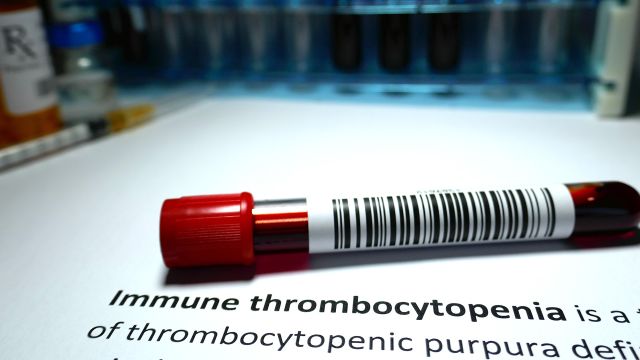When you are researching a health condition or talking to healthcare providers about a condition, it can be helpful to know some of the terminology. Below is a list of terms that may help you better understand immune thrombocytopenia (ITP). ITP is a disorder where antibodies attack and destroy blood cells called platelets, leading to low platelet counts and a variety of bleeding symptoms.
Thrombocytopenia: This is the medical term for a low platelet count or a deficiency of platelets. There are a number of different conditions that can cause thrombocytopenia.
Primary Immune Thrombocytopenia: This is one of several names for ITP you’re likely to come across when reading up on the condition. “Primary” refers to the fact that there is no known underlying cause for ITP.
Secondary Immune Thrombocytopenia: Certain health conditions can predispose a person to having ITP, because of the way they impact immune function. These include autoimmune conditions, genetic disorders, chronic viral infections (like HIV and hep C), and cancers like leukemia and lymphoma can all result in low platelet counts.
Acute and Chronic: These are medical terms to designate the duration or ITP. Acute ITP resolves within six months. Chronic ITP last longer than six months, and can last for years in some cases.
Severe and Refractory: ITP can also be described as severe and refractory. With severe ITP, bleeding symptoms continue even with treatment, which necessitates an increase in treatment. Refractory ITP resists treatment, or does not respond to treatment.
Platelet: These small blood cell fragments are made in the bone marrow and circulate through the blood stream. They help blood clot when there is an injury. They also help prevent bleeding, maintain the integrity of blood vessels, and help in the repair of damaged blood vessels.
Antibodies: Antibodies are proteins that target and attack things that harm the body, such as viruses, harmful bacteria, toxic chemicals, and some cancers. Sometimes the immune system creates antibodies that target healthy cells and tissues. In the case of ITP, the immune system produces antibodies that target platelets.
Platelet Count: This is the number of platelets in the blood, and is determined with a blood test. The count is given as the number of platelets per microliter (one-millionth of a liter). A healthy count is 150,000 to 450,000 platelets per microliter. A platelet count below 150,000 per microliter is considered thrombocytopenia. Having a platelet count below 50,000 puts a person at risk for bleeding. If a platelet count is below 20,000, serious bleeding can occur without any obvious reason.
Thrombocytosis: A condition where there are too many platelets in the blood, a count of above 450,000 platelets per microliter. Complications from thrombocytosis can include spontaneous blood clots, which can cause a heart attack or stroke.
Diagnosis of exclusion: This is the method healthcare providers use to diagnose ITP. Since there is no single test to determine if someone has ITP, making a diagnosis involves ruling out all other possible causes for the low platelet counts.
Purpura: These are purplish spots that appear on the skin (or mucous membrane tissue like the inside of the mouth). They are one possible symptom of thrombocytopenia. Purpura are the result of blood leaking from small blood vessels and pooling beneath the skin. They are also called blood spots or skin hemorrhages.
Petechiae: Similar to purpura, these are another potential symptom of thrombocytopenia. They appear are red, brown, or purple pinprick-sized dots that appear in clusters and look like a rash. They are caused by leaking capillaries (which are very small blood vessels). Petechiae can occur on the skin, eyelids, and on mucous membranes.





